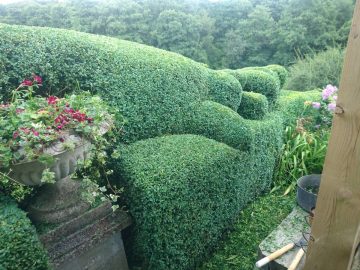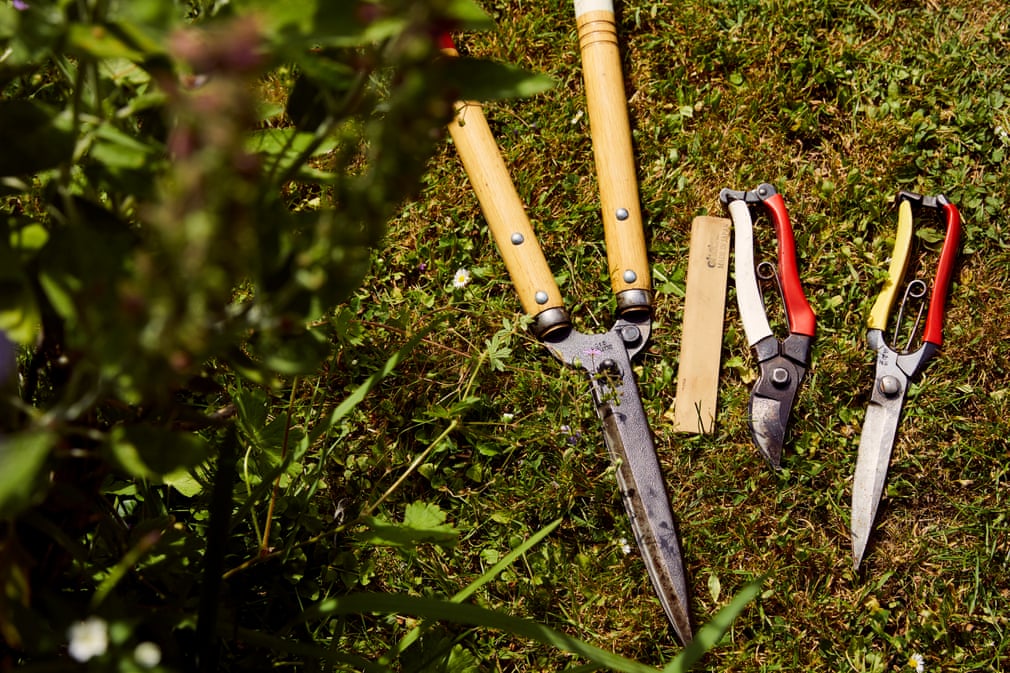THE MODERN MINT BLOG
Top Tips For Topiary – my blog about pruning for the European Boxwood And Topiary Society, is now up on their website and ready to be absorbed by you wonderful pruners!

I’ve also written them a long piece on the Best Plants for Topiary.
Wow. I have been busy in lockdown….
And as if that isn’t enough (it is more than enough really, but somehow I’m going to force more down you…) here below are more top tips for topiary.
Bonus tips, if you like…
Go visit the EBTS website for the original post, or read on below to get the bonus round of tips on offer!
Top Tips For Topiary (Bonus Tips)
- Don’t use the hunt and peck technique – this is when you are pruning a shrub by searching for ‘bits and twigs that stick out’ at funny angles. You spot one, you snip. Spot one… snip. Spot one… This takes forever to clip a shrub. And invariably it leads to you missing loads, or giving an uneven cut. Prune steadily, machine-like… like a lathe, across the face of the shrub… and go again over any bits in exactly the same, considered manner if you missed some growth the first time around.
- Give your topiary space – make sure you have some distance between each one. The viewer then gets a chance to appreciate each piece, in contrast to the next, rather than just exclaiming “Magnificent! Look at all this topiary!” then the eye moves on to something else (like the sign for the tea shop) because it is not sure what it’s meant to focus on.
- If your boxwood is a hedge, see how thin you can make the top – start this by letting the plant grow on a batter, wider at the bottom than the top. This allows more light to hit the leaf, keeping the growth strong all the way up the hedge. Then, at the peak of the hedge, pruning it thin. Narrowing is probably a better description. How narrow can you make your hedge at the top? I love to see how tight you can cut boxwood when it gets to its full height. It then becomes truly tactile – you will endlessly want to touch it, just to see if it is really possible to be so slender and lean, each time you pass the hedge.
- Mulch in spring (preferably with home made compost) to help your plants grow well – no-brainer this, as the soil is your ally, so keep improving it. If you must use a fertiliser then a diluted seaweed solution or Top Buxus will work.
- If your boxwood flowers in spring, it won’t grow – you will need to ask a botanist why. It is just something I have noticed as I’ve gardened over the years. Maybe it is unhappy so flowers instead of growing?
- To reduce the work in your garden, prune once a year – traditionally Derby day in early June was the day to get into the garden, sharpen up the shears and prune the boxwood. But boxwood doesn’t stop growing in early June, so you then have to clip again at the end of the year to remove the second flush of leaf if you want it to look sharp for winter. To save work in the garden, best to clip your boxwood in early September.
Final Tip For Topiary?
A classic this – use good tools.
Michael Gibson, New York Topiary Art!
In the New York Times earlier this year was a lovely interview with Michael Gibson, who makes topiary and gardens in New York. The article is here but you may not have access… however, search the internet, find it and have a read. It is great! His philosophy of pruning is especially worth it… Sacred geometry in topiary? Yes please! What a phrase! I think (and speak) of balance, of major and minor, of leaf volume… but sacred geometry might well make it into my topiary teaching lexicon! And the idea of directional trimming? I realise I do this, but …
Topiary Library
I do a lot of teaching topiary. I had the opportunity from my mentor, Charlotte Molesworth, to work on her garden and experiment and test techniques and generally try making shapes without the worry of failure, or being fired, or being sued and run out of business for getting it wrong. This opportunity was essential (along with Charlotte’s insistance that pruning standards had to be high!) in becoming better at topiary. When I look around the world at our cultural vitamins, what we see in the media day in and day out, I see the stupidest and grossest of people …
Clipsham Yew Tree Avenue
With Chris Poole of the European Boxwood and Topiary Society we visited Clipsham Yew Tree Avenue in Rutland. Do you know it? Amazing place! Chris and I were teaching a topiary workshop in order to give local people the skills and technique, and tenacity! to help with the pruning of the avenue and elevate it to something even more special than it already is. Read more about the workshops here. We hope to run a further workshop in September 2026, as well as teach an advanced course too. Check the teaching page through the year as it will be updated …

